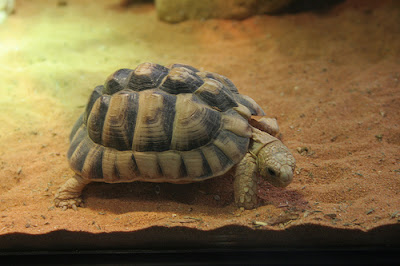The Life of Animals | Kleinmann's tortoise | Kleinmann's Tortoise is the smallest tortoise in the northern hemisphere Female tortoises are larger than the males males are more Slender and have a longer tail. Their shells have high domes, and range in color from ivory to pale gold to dark brown or dull yellow. This allows the paler tortoise to stay in the desert heat for longer. The tortoise's scutes have dark sidings That fade with age. The head and Limbs are a very pale ivory-yellow to Yellowish-brown color.
The proposed subgenus Pseudotestudo is invald, based on immature characters. It has been proposed to unite this with the Marginated tortoise species in the genus Chersus. The Negev subpopulation has been separated as a distinct species, Negev Tortoise (Testudo werneri). It does not Appear to have distinct or strongly reduced haplotype diversity, consistent with the recent extinction of the Egyptian population (see below) and slow DNA sequence evolution rates in Testudo.
Kleinmann's Tortoise Becomes sexually mature about 10-20 years old. Unlike any other Mediterranean tortoises, the T. may kleinmanni Make a call similar to the call of the Mourning Dove. Eggs are laid in shallow bowls Beneath bushes, or in vacant Burrows.











